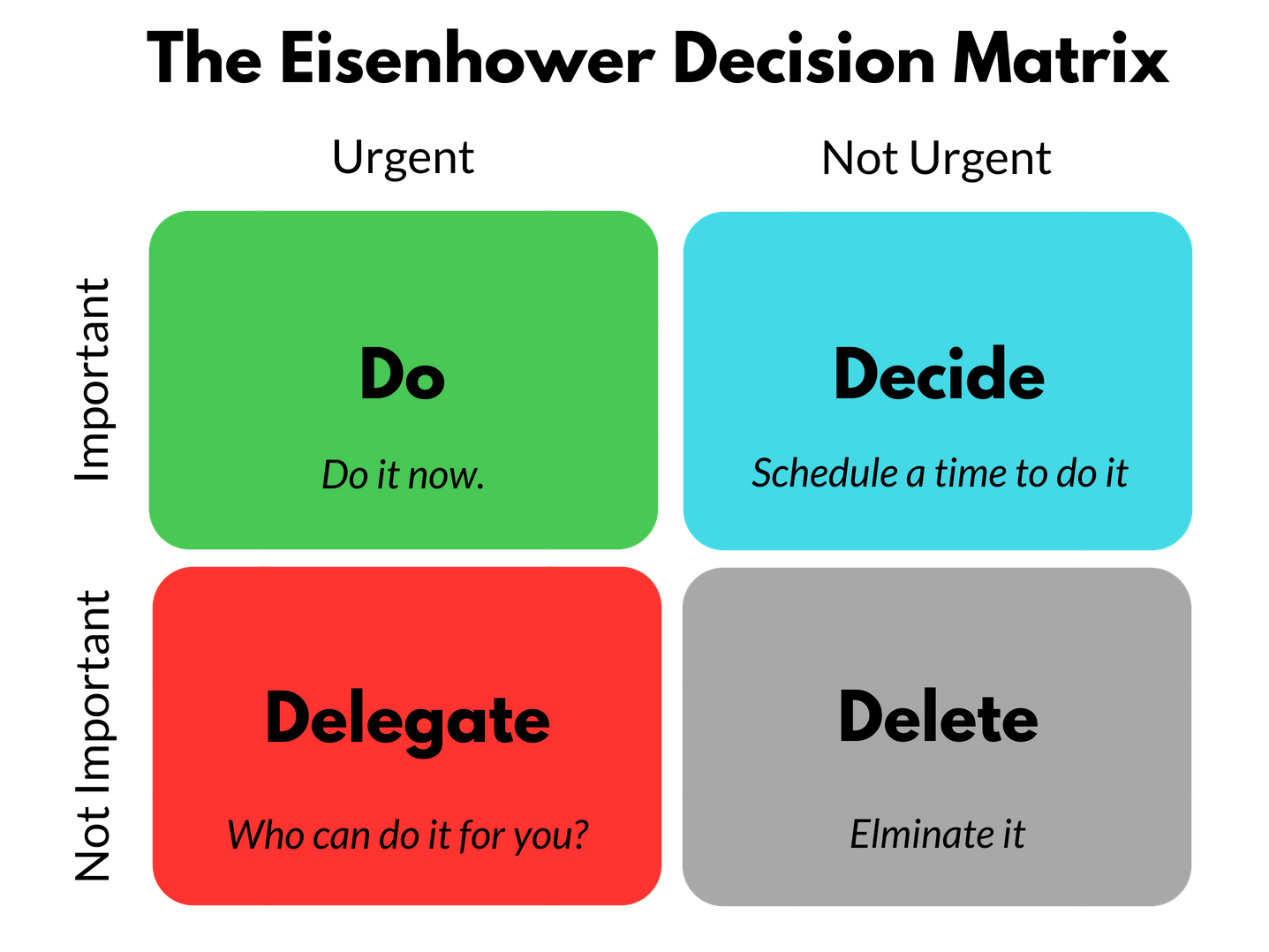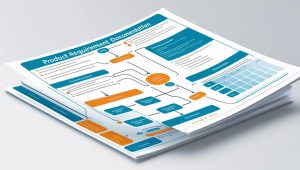The Eisenhower Matrix (also called the Urgent-Important Matrix) is a powerful productivity tool that helps prioritize tasks based on urgency and importance. It was popularized by U.S. President Dwight D. Eisenhower, who famously said:
“What is important is seldom urgent, and what is urgent is seldom important.”
Why the Eisenhower Matrix is Important
- Helps Prioritize Effectively
- Categorizes tasks into 4 quadrants, separating urgent demands from truly important work.
- Prevents burnout by reducing “fire-fighting” mode.
- Boosts Focus on Long-Term Goals
- Most people spend time on urgent but unimportant tasks (Quadrant 3).
- The matrix shifts focus to important but not urgent tasks (Quadrant 2), like planning, learning, and relationship-building.
- Reduces Stress & Procrastination
- Clearly identifies what to do now, schedule, delegate, or delete.
- Avoids last-minute rushes by planning ahead.
- Improves Decision-Making
- Used by CEOs, entrepreneurs, and high-performers (e.g., Warren Buffett’s *”2-list” strategy* is similar).
The 4 Quadrants Explained
| Urgent | Not Urgent | |
|---|---|---|
| Important | Q1: DO NOW (Crises, deadlines) | Q2: SCHEDULE (Strategy, self-improvement) |
| Not Important | Q3: DELEGATE (Interruptions, some emails) | Q4: ELIMINATE (Time-wasters, distractions) |
Example:
- Q1 (Do): Fixing a critical bug before launch.
- Q2 (Schedule): Learning a new skill for career growth.
- Q3 (Delegate): Answering non-urgent team queries.
- Q4 (Eliminate): Mindless social media scrolling.
How to Use It?
- List all tasks (work/personal).
- Categorize each into a quadrant.
- Act accordingly:
- Q1: Execute immediately.
- Q2: Block time (most high-value work is here!).
- Q3: Hand off to others.
- Q4: Delete or minimize.
Pro Tip: Spend 60-80% of time in Q2 to prevent Q1 emergencies.
Who Should Use It?
✔ Busy professionals (avoid “busywork”).
✔ Entrepreneurs (focus on growth, not just daily ops).
✔ Students (balance studies vs. distractions).



